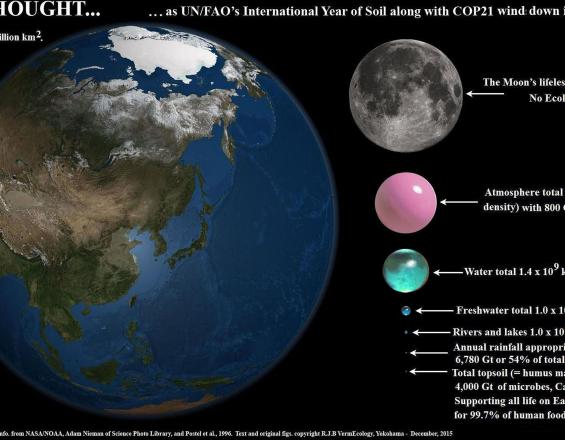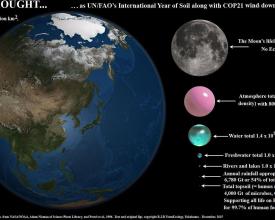
Terrain, terre végétale et triage

Nous sommes tous confrontés aux conséquences des problèmes de l'environnement naturel qui deviennent de plus en plus graves et urgents. L'analogie est une catastrophe médicale. La solution est le triage environnemental.
Les trois principaux problèmes (par ordre d'importance) sont l'extinction, le climat et la pollution. Où l'extinction est-elle la plus grave ? Le sol, qui abrite 98 % de la biodiversité mondiale, est compromis par l'érosion de la couche arable, qui s'élève à 2 000 tonnes par seconde (prévention : agriculture biologique). Le dioxyde de carbone est extrait de l'air par photosynthèse et stocké dans l'humus (solution : lombricompostage de tous les "déchets" organiques en tant qu'engrais naturel). Les poisons chimiques proviennent principalement des engrais agricoles et des biocides (la solution, encore une fois, est l'agriculture biologique et la permaculture). Le sol fournit 99 % de la nourriture humaine (seulement 0,5 % de la valeur calorifique provient des océans) ; le sol abrite 98 % de la biodiversité et de la biomasse ; toute l'eau de pluie est filtrée par le sol via les terriers des vers de terre. Seules les études financées par l'industrie soutiennent l'agriculture chimique. La principale lacune est l'absence d'un institut d'écologie des sols.
Contexte
Défis à relever
Emplacement
Impacts
La prise de conscience du fait que nous dépendons de la couche arable pour 99 % de notre alimentation et pour le filtrage et le stockage de toutes les eaux de pluie nécessite un changement d'orientation majeur de l'atmosphère, des rivières, des forêts et des océans vers le sol. Cela est mis en évidence (littéralement !) par la prise en compte du terrain et de la couche arable négligée. Si l'on additionne ces éléments, la surface réelle de la Terre exposée au soleil, à l'air et aux précipitations est plus que doublée. La mer reste plate. La productivité et la biodiversité sur terre sont également accrues. Plus important encore, le carbone organique stocké dans la couche arable passe d'une estimation actuelle de 1 500 Gt à plus de 8 500 Gt au niveau mondial et tout le dioxyde de carbone atmosphérique est traité par la litière de feuilles à travers les intestins des vers de terre, selon des cycles d'environ 12 ans.
L'agriculture biologique et la permaculture visent à conserver le carbone, l'humidité et la biodiversité du sol tout en fournissant une abondance saine de nourriture. L'agriculture chimique, largement subventionnée et autorisée à polluer et empoisonner librement les êtres humains et les autres organismes, n'est soutenue que par des études vénales financées par l'industrie. Les recherches indépendantes sont rares, voire inexistantes.
Un seul exemple : une étude scientifique récente montre que l'agriculture chimique appauvrit les vers de terre de 80 % en moyenne par rapport à l'agriculture biologique, dont les rendements sont identiques ou supérieurs. La persistance autodestructrice de l'agriculture chimique n'a aucun sens économique ou écologique alors qu'il existe de meilleures solutions.
